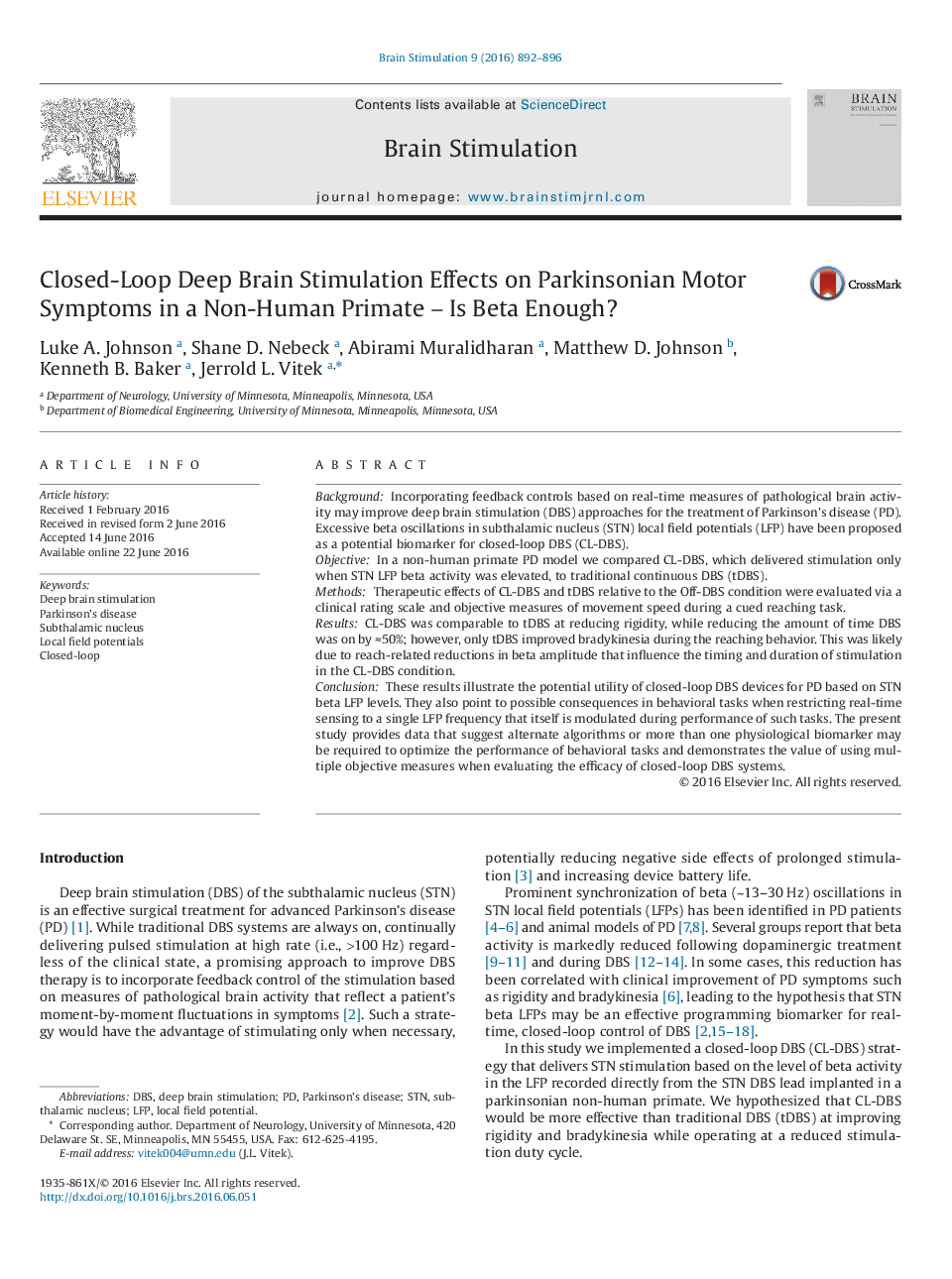| کد مقاله | کد نشریه | سال انتشار | مقاله انگلیسی | نسخه تمام متن |
|---|---|---|---|---|
| 5626892 | 1406331 | 2016 | 5 صفحه PDF | دانلود رایگان |

- Excessive beta oscillations in the subthalamic nucleus (STN) have been proposed as a biomarker for closed-loop DBS (CL-DBS).
- Beta-triggered CL-DBS was compared to traditional DBS in a non-human primate model of Parkinson's disease. CL-DBS reduced the stimulation duty cycle and was comparable and in some cases better than traditional DBS at reducing rigidity. Only traditional DBS improved bradykinesia during a reaching task.
- Reach-related reductions in beta amplitude influenced the timing and duration of stimulation in the CL-DBS condition.
- Our results illustrate the promising utility of closed-loop DBS for PD based on STN beta LFP levels. Closed-loop DBS systems may need alternate biomarkers and/or algorithms to reach their full therapeutic potential.
BackgroundIncorporating feedback controls based on real-time measures of pathological brain activity may improve deep brain stimulation (DBS) approaches for the treatment of Parkinson's disease (PD). Excessive beta oscillations in subthalamic nucleus (STN) local field potentials (LFP) have been proposed as a potential biomarker for closed-loop DBS (CL-DBS).ObjectiveIn a non-human primate PD model we compared CL-DBS, which delivered stimulation only when STN LFP beta activity was elevated, to traditional continuous DBS (tDBS).MethodsTherapeutic effects of CL-DBS and tDBS relative to the Off-DBS condition were evaluated via a clinical rating scale and objective measures of movement speed during a cued reaching task.ResultsCL-DBS was comparable to tDBS at reducing rigidity, while reducing the amount of time DBS was on by â50%; however, only tDBS improved bradykinesia during the reaching behavior. This was likely due to reach-related reductions in beta amplitude that influence the timing and duration of stimulation in the CL-DBS condition.ConclusionThese results illustrate the potential utility of closed-loop DBS devices for PD based on STN beta LFP levels. They also point to possible consequences in behavioral tasks when restricting real-time sensing to a single LFP frequency that itself is modulated during performance of such tasks. The present study provides data that suggest alternate algorithms or more than one physiological biomarker may be required to optimize the performance of behavioral tasks and demonstrates the value of using multiple objective measures when evaluating the efficacy of closed-loop DBS systems.
Journal: Brain Stimulation - Volume 9, Issue 6, NovemberâDecember 2016, Pages 892-896